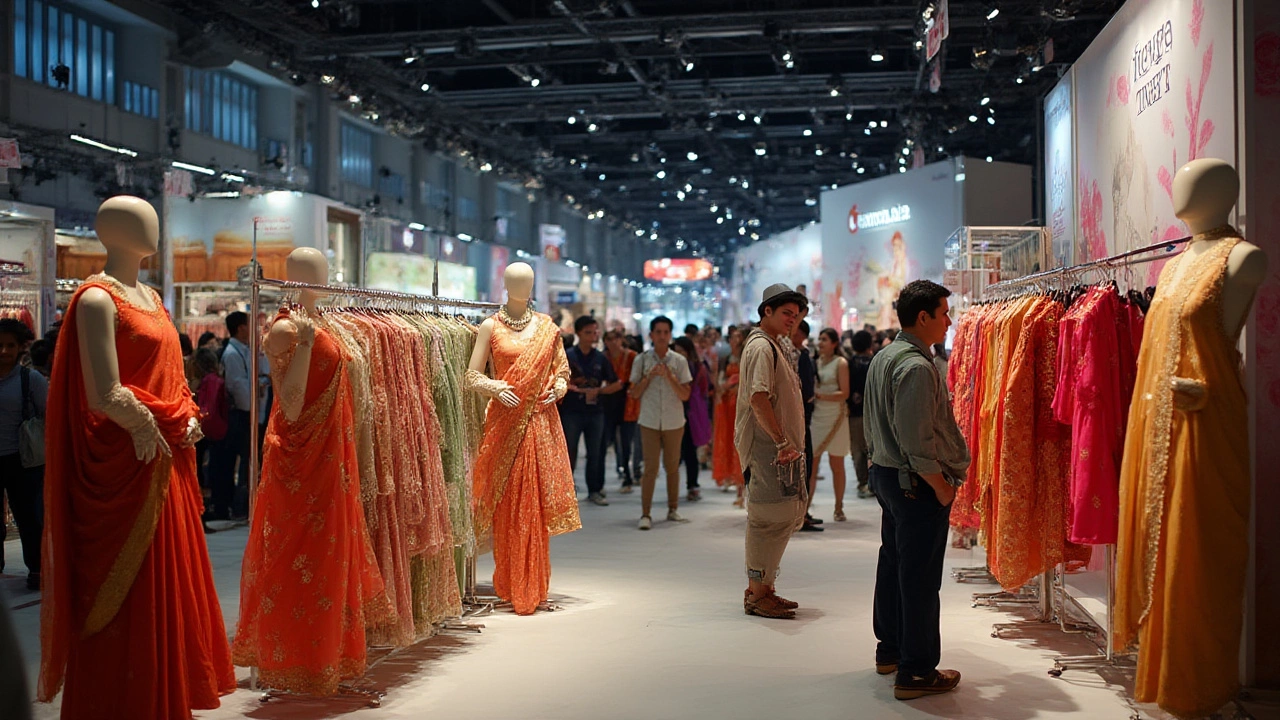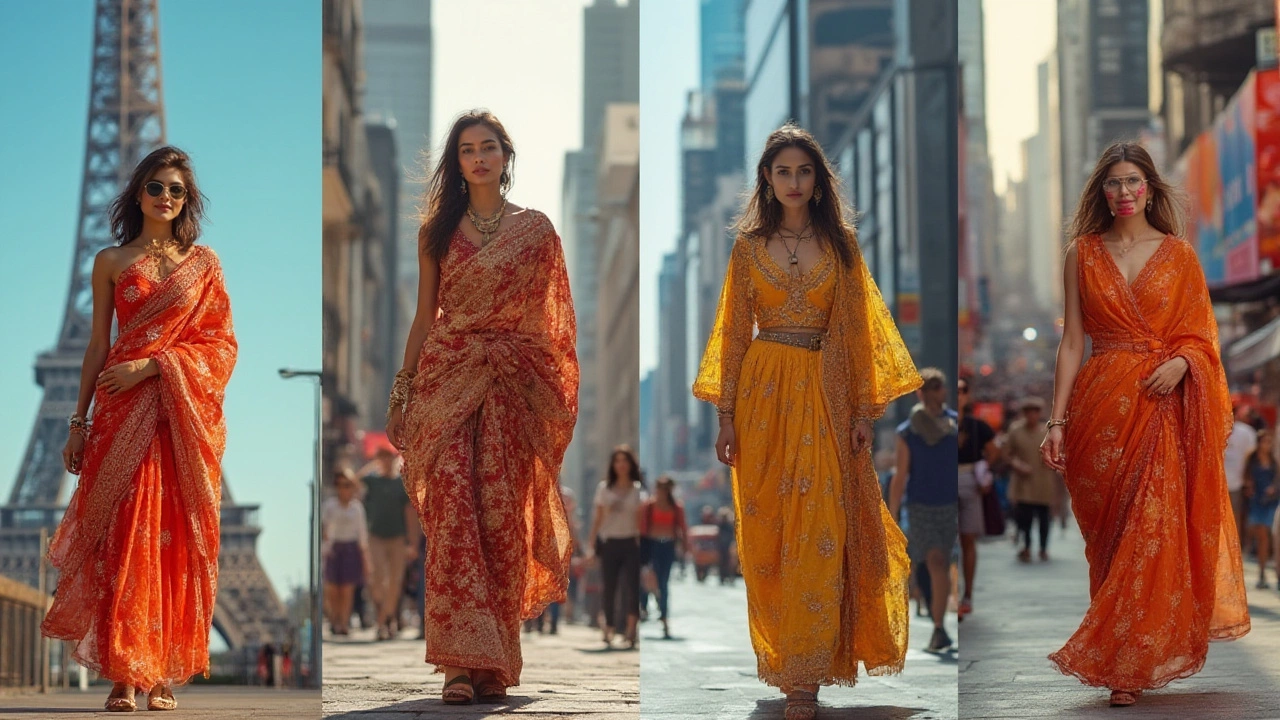Where Indian Clothing is Most in Demand Worldwide

Step into any big city, and you’ll spot someone rocking a vibrant kurta or a dazzling sari. There’s a global obsession with Indian clothes—think Bollywood weddings, Diwali in New Jersey, or Instagram influencers posing in lehengas from Jaipur. Forget any idea that Indian fashion is just for India. It’s blowing up far and wide, and the race to meet demand is getting wild. But which country is actually snapping up the most Indian clothes? The answer isn’t as obvious as it seems.
The Biggest Buyers: Who Wants Indian Clothes the Most?
If you guessed the USA, you’re right on the money. The United States tops the charts for imports of Indian clothing. According to India’s Ministry of Commerce data, in the last financial year, Indian apparel exports to the US crossed $4.2 billion. That’s a lot of saris, salwar suits, and party-ready sherwanis. New York, San Francisco, Houston, and Chicago have huge South Asian populations, but there’s more to this than just the diaspora.
American buyers can’t get enough of Indian fabrics, especially cotton and silk, for both ethnic outfits and boho-chic staples. Look at fashion chains: Urban Outfitters, Anthropologie, and even Target have flirted with Indian prints on mainstream dresses and blouses. Colleges across the US host sold-out garba nights, and it’s normal for non-Indians to show up in full desi outfits. And of course, every other wedding planner in New Jersey now knows how to drape a sari or source a proper bandhgala jacket.
But the US isn’t alone. The UK is a historic hotspot for Indian clothes, with London’s Southall and Leicester transforming into mini-Indian fashion districts. The UK annually imports over $2 billion worth of Indian textiles and apparel. Australia and Canada are catching up fast, too. In Toronto, entire retail streets feel like Delhi, with boutiques stacked floor-to-ceiling in zari work and pastel sarees. In Sydney, Indian wedding fashion is so hot that even beach weddings sometimes feature custom, breezy lehengas.
The Middle East? Dubai serves as both a shopping mecca and a redistribution hub. Indian designers fly out for pop-up events and fashion shows. The Gulf’s huge Indian labor force and the region’s love for gold embroidery and elegant fabrics fuel an endless demand for Indian wedding and festive wear. Dubai’s Bur Dubai, Meena Bazaar, and similar places have some of the highest footfalls on weekends, especially before Eid and Diwali.
Here’s a quick look at the leading markets for Indian clothing exports, based on 2024 data:
| Country | Estimated Annual Import Value (USD) |
|---|---|
| USA | $4.2 billion |
| UK | $2 billion |
| UAE | $1.2 billion |
| Canada | $800 million |
| Australia | $640 million |
So, the US stands out as the Indian clothes demand leader, but the gap is closing in other English-speaking and Gulf countries. If you’re planning to export, these are the first places to look.

What Fuels the Demand? Not Just Bollywood and Weddings
What’s got everyone so hooked on Indian clothes? Part of it is, honestly, the magic of Bollywood. Those blockbuster wedding scenes don’t just make people want to visit India—they make them want to dress like it’s a party every weekend. Whenever Priyanka Chopra or Deepika Padukone make a red carpet appearance in a sari (instead of a boring black dress), People magazine talks about it for a week. Even trending pop stars like Rihanna and Cardi B have been photographed in custom Indian outfits.
But there’s more behind the demand. Fabric and craftsmanship are a huge deal. Where else can you get handmade zardozi, intricate chikankari, or bright bandhani patterns—sometimes for a fraction of Paris designer prices? Even luxury designers admit Indian artisans rule the embroidery scene. The handiwork isn’t just pretty—it feels authentic, not machine-made or mass-produced.
The other big thing is that Indian clothes are versatile. A kurta works as formal wear, loungewear, or even beachwear. Sharara sets double for nightclubs in Dubai or brunch in Melbourne. And let’s not ignore the sustainability piece—many eco-conscious shoppers go for Indian cotton, khadi, or linen. Western brands are co-opting ajrakh and ikat prints because they sell, and social media influencers are falling for the “slow fashion” angle, too.
The role of cultural events is huge. Across the US, Canada, and the UK, Indian festivals are massive. Diwali, Holi, Navratri, Durga Puja, and Eid see a spike in sales bigger than Black Friday in some areas. Even corporate offices host “ethnic day” events. Cricket World Cups, international music gigs, and even yoga retreats fuel interest. If you’ve been to a London Diwali celebration or a New York Holi party, you know just how much money people are willing to drop on new outfits.
Online shopping is making everything bigger. With brands like Manyavar, Fabindia, Raw Mango, and Sabyasachi selling worldwide, anyone can score a wedding sherwani or Banarasi sari in two clicks. Facebook groups like “Desi Brides Abroad” are packed with buyers swapping tips and trading info on the best tailors or shops to order from.
What’s funny is how Indian style isn’t just for the Indian community. Lots of non-South Asians are picking up kurtas and anarkalis—sometimes as travel souvenirs, sometimes because the colors and comfort just beat regular Western options. Boho trendsetters, yoga types, and Gen Z all love the look. During the Coachella festival, it’s not rare to see as many embroidered dupattas as cowboy hats.

Trends, Challenges, and Tips for Exporters
If you dream of shipping Indian fashion abroad, it’s a good time to jump in—but this market comes with quirks. There are a couple of trends you need to watch.
First, the move toward customization is huge. Shoppers in New York or Toronto want tailored fits, not the standard “free size” approach. Digital tailoring platforms are blowing up. Companies specializing in remote measurements and virtual fittings, like CloudTailor or StitchMyFit, are seeing crazy growth. Smart exporters are offering video chats to discuss embroidery, colors, and measurements so buyers get the perfect match. The days of guessing sizes and hoping it fits are fading fast.
Next up, sustainability is a major selling point. Buyers, especially the younger crowd, are suspicious of “fast fashion” and love hearing about fair pay for artisans, low chemical dyes, and natural fibers. If you can show certifications or stories about craftspeople behind the clothes, it’s a selling advantage. Highlighting organic cotton or recycled saree materials punches above its weight with many buyers, especially in Canada and Australia.
Let’s talk obstacles. Exporting to the US or Europe means dealing with strict regulations, crazy-high import duties, and, sometimes, slow shipping. US Customs might flag packages for random checks or get confused by fabric labeling. Plus, fashion trends move fast—what’s hot in Mumbai today could be old news in London by winter. To stay competitive, keep an eye on runway trends and even influencer posts on social media. If you can tweak hemline styles or color palettes for each region, you’ll outsell the copy-paste exporters every time.
Want to break into new markets? Test smaller drops instead of massive shipments, and use Instagram or TikTok ads targeted at clusters of Indian expats and trend-conscious youth in your city of choice. Work with local partners for pop-ups or short-term stalls at major events. And don’t ignore language—simple sizing guides, styling tips for non-Indians, and easy returns matter a lot when you’re dealing with first-time buyers in other countries.
Shipping and delivery options can make or break a sale. Offering easy international tracking, responsive support, and prompt resolution for issues like lost parcels puts you ahead. Consider warehouses or agents in the UK or US to make returns and logistics smoother.
And don’t fall behind on tech—using WhatsApp for instant order updates, or offering virtual try-ons using AR tools (popularized by a few big Indian fashion tech startups) might sound fancy, but these raise buyer trust and keep you ahead of slower competition.
If you want to scale up, learn about each market’s big dates—know when Ramadan starts in Dubai, Jewish festivals in New York, or school breaks in Sydney, so your inventory hits stores at the right time. Local sales peaks don’t always match Indian festival calendars.
There’s never been this much appetite for Indian fashion abroad. The US leads the pack for demand, but style is borderless—and if you get the basics right, you can sell a Lucknowi kurta or a Kanchipuram sari anywhere from Berlin to Brisbane. The biggest tip? Pay attention to fit, finish, and trends, and don’t be afraid to stand out—because the world’s closet is ready for a lot more India.